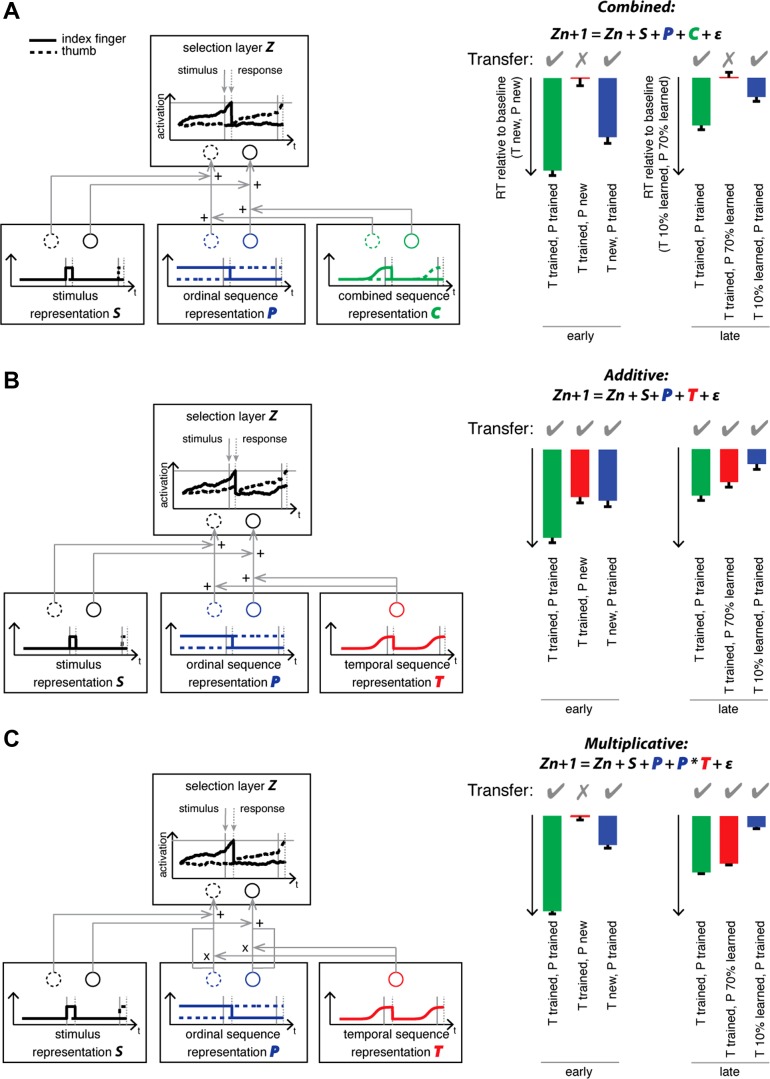Fig. 1.
Alternative hypotheses of the interaction between ordinal and temporal representations in a timed serial reaction time task (SRTT) and its implications for transfer of the trained temporal sequence. At the beginning of learning, the motor commands are exclusively triggered by a sequence of cues (illustrated for index followed by thumb) through a learned stimulus-response association S (imperative cue: finger mapping). This layer triggers activity in the corresponding unit of the selection layer Z, which in turn issues a correct response when the activation reaches threshold. With learning, the motor system acquires a representation of the ordinal sequence of finger movements P that predicts the next response in form of a tonic preactivation of the effector, which is sent to the corresponding unit in the selection layer. A: combined model: Furthermore, the nervous system is hypothesized to acquire a combined sequence representation C, which contains a more precisely timed ordinal representation, that phasically increases the predicted unit just before the expected times of cue onset (left). Since the timing of movements is bound to the learned order of movements, no transfer [reaction time (RT) advantage to baseline] of temporal structure can occur when the latter is tested with a new ordinal structure (right). B: additive model: an independent representation of the temporal sequence is acquired that sends phasic signals to all the units just before the expected times of cue onset (left). Temporal structure would be transferrable to a new order of movements (right) even when the ordinal structure with which it is recombined is completely unknown. C: multiplicative model: An independent representation of temporal structure is acquired, that is integrated with the ordinal signal multiplicatively, before it is propagated to the selection layer. Transfer can only occur once the ordinal structure with which it is paired is partly learned (right, late transfer phase), because the temporal representation can only take effect on preactivated units.

